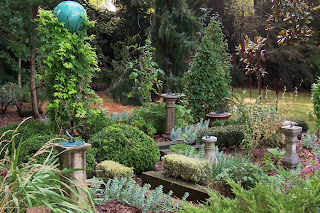Gardening Heresy Good for Environment

After a rousing introduction that recalled the history of why we garden the way we do, John Peter Thompson got three hundred landscape architects, environmentalists, and government officials (at last week’s Land Ethics Symposium, sponsored by Bowman’s Hill Wildflower Preserve www.bhwp.org near New Hope, Pennsylvania) to entertain an heretical thought: It’s time for a change. Once he pointed out that today’s McMansion is the U.S. version of an English baronial manor house, he drew the parallel between the current landscape styling of vast lawns and perimeter plantings to the baronial manor house firmly planted in its “park.” The first European grand-scale gardens were the products of kings, both French and English, who used their gardens as displays of wealth, power, and authority. These gardens took hundreds of gardeners to maintain, as well as the expense of global plant hunts to acquire rare botanical curiosities. They were as far removed as we can imagine from being sustainab...


